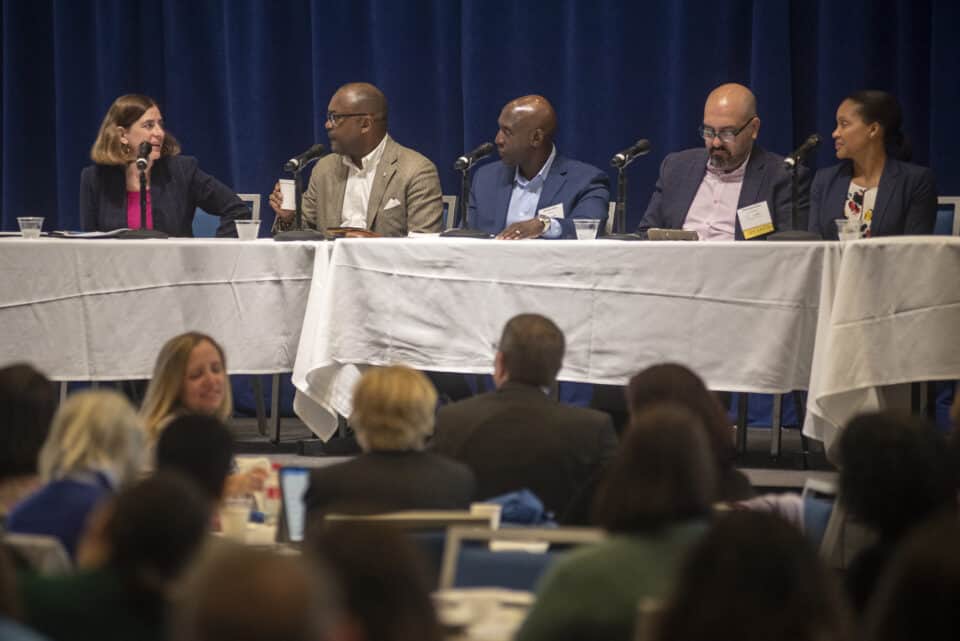News
By Emerson Foster, Head of Human Resources U.S Business Unit & People Advisory Group at Takeda
One of the highlights of my role as a Human Resources leader for a global pharmaceutical company is the fact that I’m surrounded by brilliant minds every day. I have a front row seat to witnessing some of the brightest and the best people in their fields at Takeda collaborate to develop innovative technologies for patients around the world.
But I see other things too. And it’s the need to intensify our focus on workforce development—educating and training individuals to meet the current and future needs of the industry and at the same time, providing equitable opportunities. The gap is clearly visible when it comes to new entrants to the workforce and among underrepresented populations. Taken in context and looking at the potential impact to the STEM industry, it’s more than a gap—it’s a crevasse—and it’s yawning. This is why I was proud to participate yesterday in a powerful panel at MassBioEd’s 8th Annual Life Sciences Workforce Conference with other equally engaged and committed business and government leaders. Here I’m pictured with Lauren Jones, Secretary of Labor and Workforce Development for the Commonwealth of Massachusetts and Kenn Turner, President Massachusetts Life Science Center. Both are leading the way to ensure all communities are prepared and able to access opportunities in the Life Science industry and beyond.

Tackling it together:
We had a robust discussion about how industry, civic, community and academic leaders could work together to prepare for future talent needs in the Life Sciences Industry. And there’s never been a better time for it. As I said earlier, Human Resources offers a bird’s eye view to what’s happening in the workplace, and to some extent, society overall. For the first time in history, employers are welcoming five generations in the workplace. It’s a prime opportunity for traditional mentoring, reverse mentoring and for employees to learn from each other regardless of whether they’ve used a Kodak camera or the latest smart phone to take pictures.
As business, civic and community leaders, we have a responsibility to embrace these opportunities to help shape the future workforce. But how can we fill that crevasse to help high school students, new college graduates, or the person who isn’t even aware that a career in STEM is not only feasible, it’s attainable? We have to tackle these challenges head on. We also need to put training and development programs in place to create equitable experiences for potential employees in these categories.
Filling the crevasse:
Our commitment isn’t a passing fad. It’s personal. As the largest life sciences employer in Massachusetts, Takeda is committed to being a leader in helping to advance workforce development strategies. More importantly, we’re committed to doing our part to provide opportunities in the life sciences sector for new entrants to the workforce, including underrepresented populations. Here’s how, by:
- Investing in internship and apprenticeship opportunities to increase access to and familiarity with the sector.
- Collaborating with partners to develop training programs in Massachusetts to provide pathways to job opportunities for new entrants to the industry and underrepresented populations.
You’ve heard the phrase, “desperate times call for desperate measures,” but we’re not desperate. We’re agile, engaged and prepared to do what it takes to help develop the workplace of the future. It’s possible, and from what I can see, the future looks bright.

Read original post on LinkedIn.

 MassBioEd
MassBioEd